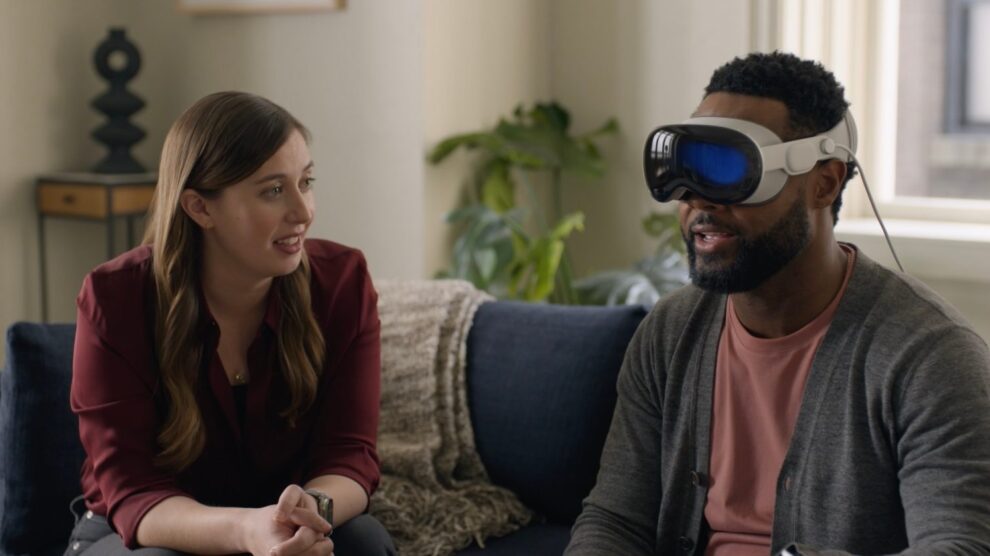Among swirling hype introducing Apple’s inaugural Vision Pro augmented reality headset, eagle-eyed technologists noticed a stealthy product spec downgrade subsequently.
Originally marketed supporting full 1080p resolution video mirroring, an erased line item now lists 720p max displays instead. While unexplained by Apple currently, the change holds meaningful implications around visual fidelity and performance balancing.
Today we dive into the what’s and why’s behind this video mirroring shift and explore realistic impacts molding purchase decisions pending official feature justifications.
What is Video Mirroring Anyways?
Before analyzing impacts, let’s quickly establish video mirror terminology foundations.
Video mirroring enables wirelessly broadcasting Vision Pro headset visual perspectives unto separate monitors. Think viewing environments occupant sees displayed elsewhere projecting presentations, media, creations and more mirroring that first-person vantage.
This allows sharing immersive views plus overlays simultaneously with audiences lacking own headsets while collaborating multiplatform flexibility.
Handy Instructional, Entertainment and Collaboration Tool
Use case applications span from:
- Classroom learning diving historical reenactments
- Conference room pitches overlaying charts and models
- Living room big screen movies or gaming boasting VR perspectives sans isolation
Thus video mirroring proves essential unlocking AR headgear advantages augmenting real-time activities benefiting insider views broadcasted externally by products like Vision Pro.
Why Reduce Visual Fidelity Capacity?
Given video mirror functionalities seemingly selling point differentiating AR headgear from traditional screens, why then secretly slim maximum supported resolutions?
Most likely justifications include:
- Thermal challenges dissipating additional display processing heat
- Battery limitations powering fluid streams
- Insufficient wireless bandwidth allotments
Essentially, current hardware likely strains smooth 1080p encoding/transmissionthresholds, prompting Apple engineering compromising consumer expectations temporarily until more capable successors launch.
A Proactive Move Bolstering User Experiences
Cynics called this bait and switch spec downgrading. But in reality, Apple smartly avoids overpromising perils plaguing consistency and reliability which dogged previous innovation launches like Folding or 5G initially.
Smooth 720p mirroring proves leaps beyond status quo nonetheless while forestalling struggles tainting overall user enjoyment had displays pushed resolutions too aggressively present-generation.
How Significantly Does 720p Resolution Degrade Fidelity?
Relationally, 720p graphics only deliver about 70% sharpness detailing compared 1080p streams pixel-for-pixel. But in practical viewing contexts, the differences feel less drastic than numbers imply.
Pixel peeping text clarity and interface elements suffer noticeable setbacks. But immersive environments and video playback remain perfectly usable even discerning home theater aficionados in most living spaces.
That said, corporate presentation readability suffers noticeable compromise forcing second glances deciphering graphics lacking reads crisp before largely.
The Curse of Subpixel Neglect
Additionally, 720p conveys images through fewer defined points along screen widths losing subpixel smoothing effects better blending colors seamlessly side-by-side 1080p.
The resulting edges sometimes show jagged stair-step artifacts despite often imperceptible nitpicks faced daily on mobile phones displaying similar resolutions currently.
How Significantly Do Practical Experiences Degrade?
Accepting quantified visual fidelity metrics pointing clearly favoring 1080p, do downgraded displays detrimentally transform real-world application utilities?
We expect 720p mirroring functionally sustains most immersive entertainment, presentation, instruction and collaboration use cases reasonably well despite underwhelming pixel peepers scrutinizing screens nearest daily.
Power computer users miss out crisper text and detail flexibility during intensive big-screen computing sessions. But common mirroring applications shine through nonetheless for most buyers.
The Bigger Picture Beyond Mirroring
Stepping back, video transmission shortcomings barely blemish overall Vision Pro value propositions aligned more transforming augmented reality stays rather than just productivity multipliers.
Early adopters craving bleeding-edge spec sheets feel understandable letdowns nonetheless. But we expect outstanding hardware and software accomplishments outweigh mirroring shortcomings delivering groundbreaking experiences showcasing AR promise through many lenses long-term.
Hopefully Apple rectifies overpromising marketing errors transparently soon while setting reasonable expectations until next-generation upgrades unlock 1080p powers later.










Add Comment